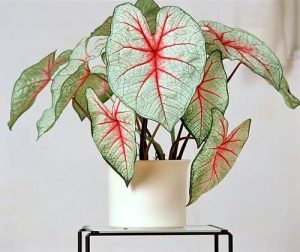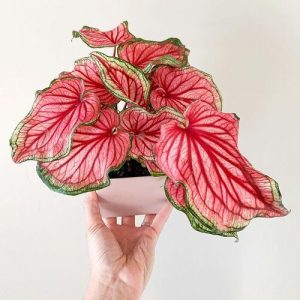- English
- Chinese
- French
- German
- Portuguese
- Spanish
- Russian
- Japanese
- Korean
- Arabic
- Irish
- Greek
- Turkish
- Italian
- Danish
- Romanian
- Indonesian
- Czech
- Afrikaans
- Swedish
- Polish
- Basque
- Catalan
- Esperanto
- Hindi
- Lao
- Albanian
- Amharic
- Armenian
- Azerbaijani
- Belarusian
- Bengali
- Bosnian
- Bulgarian
- Cebuano
- Chichewa
- Corsican
- Croatian
- Dutch
- Estonian
- Filipino
- Finnish
- Frisian
- Galician
- Georgian
- Gujarati
- Haitian
- Hausa
- Hawaiian
- Hebrew
- Hmong
- Hungarian
- Icelandic
- Igbo
- Javanese
- Kannada
- Kazakh
- Khmer
- Kurdish
- Kyrgyz
- Latin
- Latvian
- Lithuanian
- Luxembou..
- Macedonian
- Malagasy
- Malay
- Malayalam
- Maltese
- Maori
- Marathi
- Mongolian
- Burmese
- Nepali
- Norwegian
- Pashto
- Persian
- Punjabi
- Serbian
- Sesotho
- Sinhala
- Slovak
- Slovenian
- Somali
- Samoan
- Scots Gaelic
- Shona
- Sindhi
- Sundanese
- Swahili
- Tajik
- Tamil
- Telugu
- Thai
- Ukrainian
- Urdu
- Uzbek
- Vietnamese
- Welsh
- Xhosa
- Yiddish
- Yoruba
- Zulu
- Kinyarwanda
- Tatar
- Oriya
- Turkmen
- Uyghur

Gardeners value caladium for its vivid leaf colors and brightness. Caladium has to be grown effectively by knowing the climatic parameters fit for it.

Caladium
Temperature guidelines
The range of temperature
Caladium is a tropical and subtropical plant with high temperature needs. Between 20℃ and 30℃ is the appropriate development temperature. Calcium will grow less when the temperature is below 15℃ and may cause the leaves to wither or maybe die of the plant when the temperature is below 10℃. Consequently, in cold seasons or regions, one should implement insulating actions like moving inside or using a heat preservation blanket.
Thermostats vary
Caladium prefers a constant temperature; so, significant temperature fluctuations will influence its development. Particularly in spring and fall, when the temperature difference between day and night is considerable, temperature control should get particular attention. Reducing direct wind and raising the humidity surrounding the plant help to keep the temperature constant.
Desired humidity levels
environment with high humidity
Caladium requires great humidity and is endemic in tropical rainforest environments. A ideal atmospheric humidity is between 60% and 80%. Caladium keeps healthy leaves and brilliant color by means of higher humidity. Should humidity be too low, the leaves’ margins might dry out or seem burned.
Control of humidity:
Spraying water, using a humidifier, or arranging a bowl of water around the plant can help you to raise air humidity while keeping caladium inside. Simultaneously, steer clear of water accumulating around plant roots to ward root rot. Maintaining suitable humidity depends mostly on sensible watering frequency and well-drained soil.
Lighting demands
Environment with partial shade
Calcium likes indirect, bright light. The best growth conditions are either semi-shaded or diffused light. Strong sunshine may burn leaves, fade their color, and even scorish them. Too poor light will cause caladium’s development to slow down and lightens the leaves.
Regulating light
Maintaining inside, you may put caladium next to a window facing east or north to provide mild light. Should one be in direct sunlight, it is advised to block it using curtains or sunshade netting. Plant growth lights may be used to augment inadequate winter light.
Dirt needs
Well-drained dirt
Colored caladium has strong needs for soil drainage. Appropriate soil should be rich in organic content, loose, with high drainage ability. To guarantee soil permeability and nutrient availability, choose a soil formula including peat soil, leaf humus and sand.
The pH
Growing in slightly acidic to neutral soil, colored caladium is fit; the pH value of the soil should be between 5.5 and 6.5. Too alkaline soil will hinder the absorption of nutrients by colored caladium, therefore promoting inadequate development. Adding sulfur or acidic organic fertilizer helps one change the pH value of the soil.
Maintenance and control
Watering
Colored caladium prevents waterlogging but preferring a wet soil condition. While the soil should remain wet throughout summer’s peak growth season, the frequency of watering should be suitably lowered after winter’s dormant season. Before every watering, ensure sure the surface of the soil is dry to prevent too much watering and root rot.
Fertilization:
Colored caladium is somewhat nutrient-demand driven. Applied throughout the growth season every two to three weeks, diluted liquid fertilizer should You may choose nitrogen, phosphorous, and potassium rich chemical fertilizers. Take great care not to overfertilize to prevent harm from fertilizer. Stopping fertilization during the dormant phase will help to avoid too high nutrient levels in the plant.
Editing
Frequent trimming helps to maintain colored caladium attractive and healthy. To encourage the development of fresh leaves, chop off old and yellow ones. Pruning overly thick leaves at the same time may assist to increase ventilation and lower the prevalence of illnesses and pests.
Pest and disease management
Often occurring disorders
Typical diseases of colorful caladium include root rot and leaf spot as well as anthracnose. Spraying fungicides helps to reduce black or brown patches on the leaves that mostly represent leaf spot and anthracnose. Waterlogging in the soil is mostly responsible for root rot; so, one should pay close attention to enhance drainage conditions.
Typical bug pests
Aphids, red spiders, and scale insects may all affine to colored calium. Spraying with soapy water, releasing natural enemies, or using low-toxic pesticides helps one to regulate it. Caladium’s healthy development will be preserved by regular plant examination and quick identification and treatment of pests.
Appropriate sites for horticulture
In tropical and subtropical climates
Caladium is best grown in tropical and subtropical climates as the temperature and humidity there are comparable to those of its natural habitat and may provide a consistent high degree. Caladium gives the finest decorative impact and grows all year round in these places.
Agriculture in temperate climates
Caladium may be grown within a container in temperate climates. It may be kept inside for winter’s insulation or outside in a semi-shaded summer climate. In temperate climates, cultivation calls especially for careful regulation of temperature and humidity to guarantee the good development of caladium.
Garden caladium application
Inside décor
Rich leaf color and distinctive leaf form make caladium a popular choice for interior décor. Placed in living rooms, study rooms, workplaces and other areas to enhance the natural beauty and creative ambiance of the interior, it may be grown alone or in conjunction with other foliage plants.
Flower gardens and border vegetation
Caladium is often employed in tropical and subtropical gardens in the arrangement of border plants and flower beds. Its brilliant leaves become a focus in landscape design as they may provide the flowerbed color and layering.
Ecological value of colorful leaf taro
Colored leaf taro has considerable ecological worth in addition to aesthetic appeal. Rich leaves of it may release oxygen, absorb carbon dioxide, and help to clean the air. Simultaneously, colorful leaf taro may raise ambient humidity, thus facilitating a pleasant living environment.

Caladium
Strong adaptability and great ornamental value define a foliage plant like colored leaf taro. Understanding the needs for temperature, humidity, light, soil, and care of colorful leaf taro would help one to effectively grow it. By means of rational and scientific management, the aesthetic and ecological worth of colorful leaf taro may be completely appreciated, thus rendering a lovely scene in home and garden.
Previous News
Watering frequency of Tiger Tail OrchidNext News
The main characteristics of the genus Maranthus


